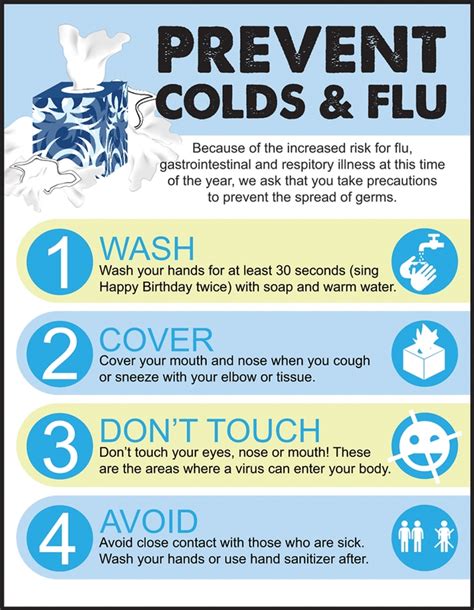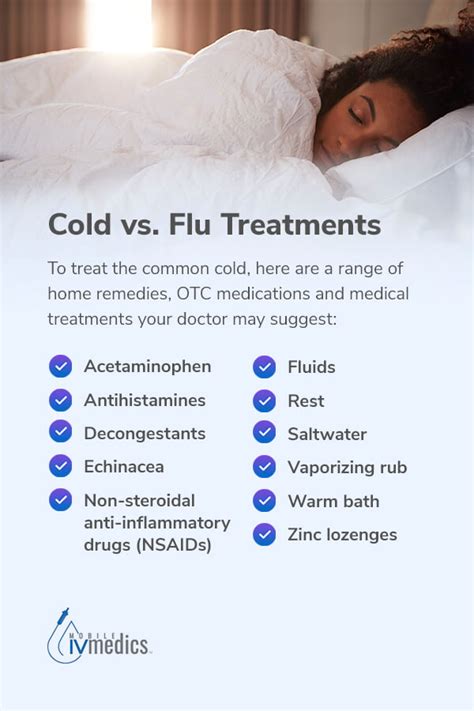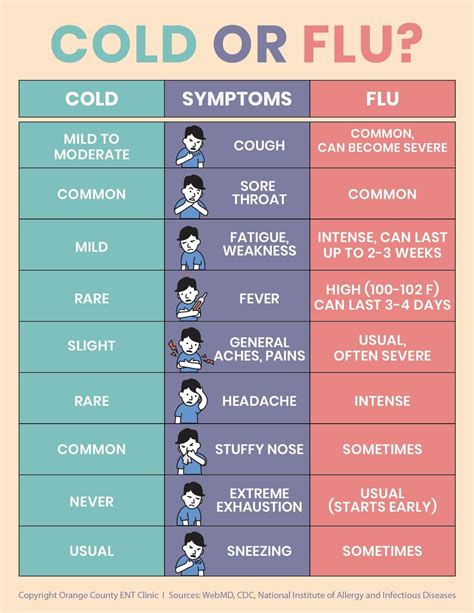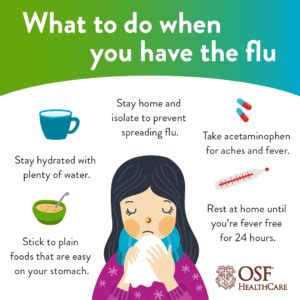Intro
Distinguish between cold and flu symptoms, understanding key differences in viral infections, respiratory issues, and seasonal illnesses to determine the best treatment approach.
The common cold and influenza, often referred to as the flu, are two of the most prevalent respiratory illnesses affecting people worldwide. Both conditions share similar symptoms, making it challenging for individuals to determine whether they have a cold or the flu. Understanding the differences between cold and flu symptoms is crucial for proper diagnosis, treatment, and prevention of complications. In this article, we will delve into the importance of distinguishing between cold and flu symptoms, exploring the benefits of accurate diagnosis, and discussing the working mechanisms of these illnesses.
The common cold is a viral infection that affects the upper respiratory system, causing symptoms such as sneezing, coughing, and runny nose. In contrast, the flu is a more severe respiratory illness caused by the influenza virus, leading to symptoms like fever, chills, and body aches. While both conditions can be uncomfortable and disrupt daily life, the flu can lead to more serious complications, especially in vulnerable populations like the elderly, young children, and people with underlying health conditions.
Recognizing the differences between cold and flu symptoms is essential for seeking appropriate medical attention and receiving effective treatment. A proper diagnosis can help individuals manage their symptoms, reduce the risk of complications, and prevent the spread of illness to others. Furthermore, understanding the causes and risk factors associated with cold and flu can empower people to take preventive measures, such as practicing good hygiene, getting vaccinated, and maintaining a healthy lifestyle.
Cold Symptoms

Flu Symptoms

Cold and Flu Differences
While both cold and flu symptoms can be uncomfortable, there are distinct differences between the two. The flu is generally more severe, with symptoms like high fever, chills, and body aches being more pronounced. In contrast, cold symptoms tend to be milder, with a focus on nasal congestion, sneezing, and coughing. Understanding these differences is crucial for seeking proper medical attention and receiving effective treatment.Cold and Flu Prevention

Cold and Flu Treatment

Cold and Flu Complications
In some cases, cold and flu can lead to complications, especially in vulnerable populations. Some potential complications include: * Pneumonia * Bronchitis * Sinus infections * Ear infections * Exacerbation of underlying health conditions, such as asthma or heart diseaseCold and Flu Diagnosis

Cold and Flu Management

Cold and Flu Vaccination
Vaccination is a crucial aspect of cold and flu prevention. The flu vaccine, in particular, can help protect against the most common strains of the flu virus. While there is no vaccine for the common cold, practicing good hygiene and maintaining a healthy lifestyle can help reduce the risk of illness.What is the difference between a cold and the flu?
+The common cold and the flu are two distinct respiratory illnesses with different symptoms and severity levels. The flu is generally more severe, with symptoms like high fever, chills, and body aches being more pronounced.
How can I prevent the spread of cold and flu?
+Preventing the spread of cold and flu involves practicing good hygiene, getting vaccinated against the flu, maintaining a healthy lifestyle, and avoiding close contact with people who are sick.
What are the most effective treatment options for cold and flu?
+Treatment for cold and flu typically focuses on managing symptoms and reducing the risk of complications. Over-the-counter medications, rest, hydration, and practicing good hygiene are effective treatment options.
Can cold and flu lead to complications?
+Yes, cold and flu can lead to complications, especially in vulnerable populations. Potential complications include pneumonia, bronchitis, sinus infections, and exacerbation of underlying health conditions.
How can I diagnose cold and flu?
+Diagnosing cold and flu typically involves a physical examination and medical history. Healthcare providers may also use diagnostic tests, such as rapid influenza diagnostic tests, to confirm the presence of the flu virus.
In conclusion, understanding the differences between cold and flu symptoms is essential for proper diagnosis, treatment, and prevention of complications. By recognizing the distinct characteristics of each illness, individuals can take proactive steps to manage their symptoms, reduce the risk of illness, and maintain overall health and well-being. We invite you to share your experiences and insights on cold and flu prevention and treatment, and to explore our resources for more information on maintaining a healthy lifestyle.
